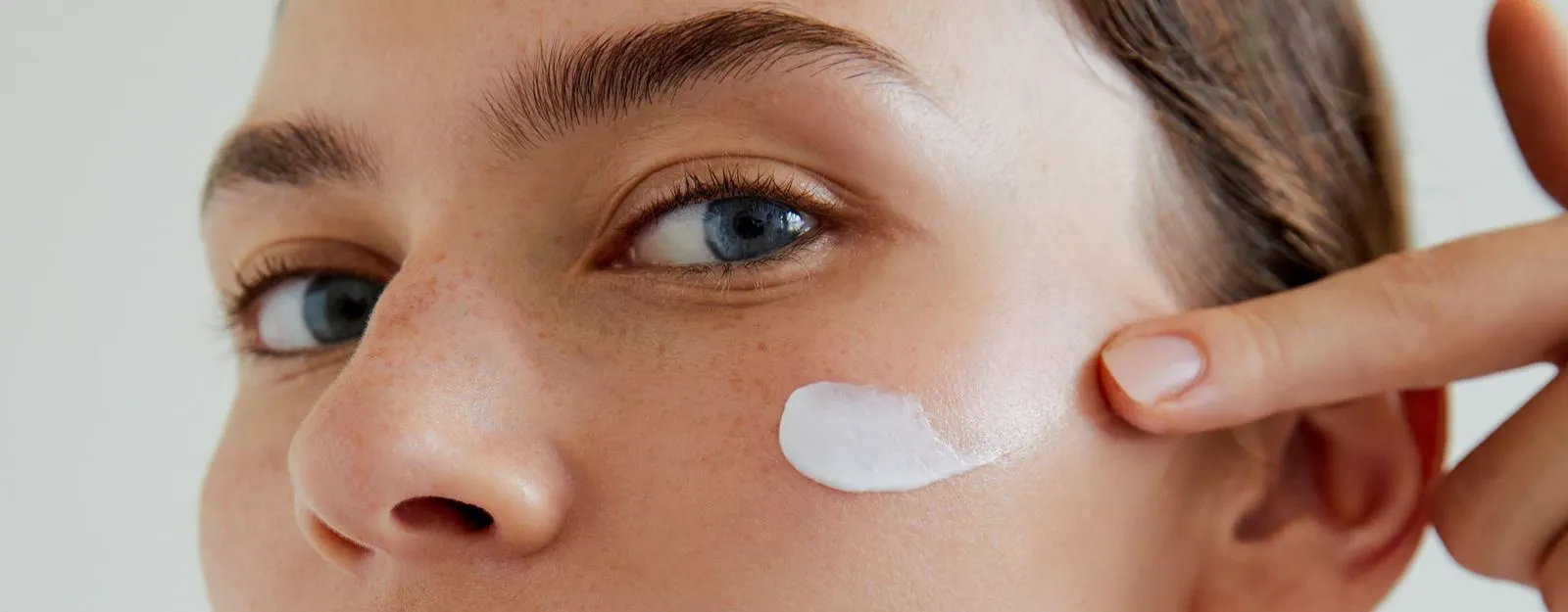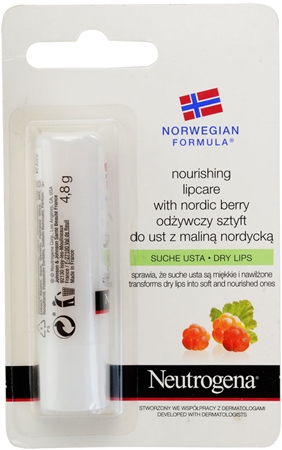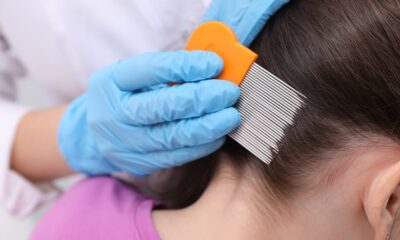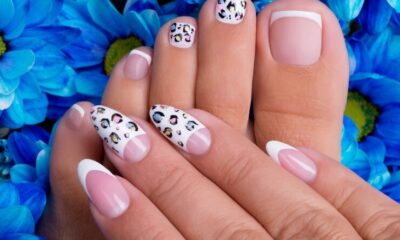Skin
A Comprehensive Guide to Valmont Skin Care Products

A Comprehensive Guide to Valmont Skin Care Products in the world of luxury skin care, few names carry the prestige and reputation of Valmont. Known for its high-performance formulas, Valmont skin care products have become synonymous with scientifically advanced treatments and effective anti-aging solutions. Founded in Switzerland, the Valmont brand harnesses the purest ingredients from the Swiss Alps to create products that offer visible results. With a strong emphasis on hydration, cellular regeneration, and anti-aging, Valmont’s offerings have earned a loyal following among beauty enthusiasts and professionals alike.
This guide takes a deep dive into the world of Valmont, exploring its best-selling products, the science behind its formulations, and why it has become a staple in luxury skin care routines around the world.
The Origins of Valmont: A Legacy of Excellence
Valmont’s story begins in Switzerland, a country known for its pristine natural landscapes and groundbreaking scientific advancements. Established in 1985, Valmont emerged as a brand dedicated to skin care solutions rooted in medical expertise. Drawing inspiration from the Valmont Clinic, a wellness center that specialized in cellular regeneration therapies, the brand quickly gained a reputation for combining nature and science in its products.
Valmont’s founders, Sophie and Didier Guillon, focused on creating skin care products that addressed aging at a cellular level. They incorporated the clinic’s knowledge of skin biology with innovative ingredients, such as pure glacier water and DNA from salmon, to formulate products that offered real, long-lasting results. Today, Valmont continues to innovate, building on its heritage of excellence and bringing Swiss precision to the world of beauty.
The Science Behind Valmont Skin Care Products
What sets Valmont skin care products apart from others on the market is the brand’s commitment to science-backed ingredients and cutting-edge technology. Valmont emphasizes cellular regeneration—an essential process in maintaining youthful, radiant skin. Over time, skin cells become damaged by environmental stressors, leading to visible signs of aging like wrinkles, loss of elasticity, and dullness. Valmont addresses these concerns by focusing on revitalizing the skin’s natural repair mechanisms.
Valmont’s key ingredients include:
- Triple DNA: A core ingredient in many Valmont products, this molecule is derived from salmon milt and has exceptional hydrating and regenerating properties. Triple DNA boosts cell metabolism, supports moisture retention, and stimulates collagen production, leading to firmer, smoother skin.
- Glacier Water: Sourced from the Swiss Alps, this pure water is rich in minerals that help strengthen the skin’s barrier function. It delivers essential hydration while also soothing and protecting the skin.
- RNA: Another powerful ingredient in Valmont’s formulations, RNA works in conjunction with DNA to support skin cell renewal. It enhances the skin’s natural defenses against oxidative stress, helping to prevent the damage caused by free radicals.
By focusing on these scientifically proven ingredients, Valmont creates skin care solutions that not only hydrate and nourish the skin but also work at a deeper cellular level to repair and protect.
Top Valmont Skin Care Products to Try
With a wide range of products to suit different skin types and concerns, Valmont offers everything from cleansers to serums to targeted treatments. Here’s a closer look at some of the brand’s standout offerings that have gained recognition for their performance and luxurious feel:
1. Valmont Prime Renewing Pack
The Prime Renewing Pack is often hailed as Valmont’s hero product. This anti-aging treatment mask provides an instant lift, leaving the skin smoother, more radiant, and visibly rejuvenated. The mask works by energizing the skin cells and boosting circulation, making it perfect for anyone looking to achieve a more youthful glow.
Its unique formula contains Valmont’s signature Triple DNA, RNA, and a blend of peptides that help restore skin elasticity and firmness. Whether used as a quick fix before a big event or as part of a daily routine, this product delivers immediate and long-term benefits.
2. Valmont Hydration Moisturizing with a Mask
Hydration is at the heart of many Valmont products, and the Moisturizing with a Mask is no exception. Infused with glacier water and hydrating complexes, it’s ideal for dry or dehydrated skin that needs an instant boost.
The mask can be used weekly as a deep treatment or more frequently during colder months when the skin is more prone to dryness. It restores comfort to the skin and smooths out fine lines caused by dehydration, making it a must-have for those dealing with parched complexions.
3. Valmont V-Line Lifting Cream
The V-Line Lifting Cream targets one of the most common signs of aging—fine lines and wrinkles. This luxurious cream focuses on smoothing out wrinkles and firming the skin, giving it a lifted, youthful appearance. Its potent ingredients, including a blend of peptides, collagen-boosting agents, and hyaluronic acid, work to reduce the appearance of deep lines while improving skin elasticity.
What sets this product apart is its silky texture, which feels lightweight but deeply nourishing. Regular use of the V-Line Lifting Cream helps to redefine facial contours, particularly in the jawline and cheek areas.
4. Valmont Elixir des Glaciers Serum
The Elixir des Glaciers line is Valmont’s most premium collection, and the Elixir des Glaciers Serum is a star product within this range. Formulated with the purest ingredients, including glacier water and plant extracts, this serum is designed to repair, rejuvenate, and revitalize the skin.
It delivers an intense burst of hydration while also addressing signs of aging, such as sagging skin and loss of radiance. The serum’s high concentration of active ingredients makes it one of the most effective products in Valmont’s lineup for achieving a visibly youthful complexion.
5. Valmont Clarifying Surge
Brightening and evening out the skin tone is another key focus of Valmont’s products, and the Clarifying Surge cream is an excellent example. This brightening cream targets hyperpigmentation, dark spots, and dullness by using a combination of exfoliating agents and brightening complexes.
It’s especially beneficial for those dealing with uneven skin tone, age spots, or post-inflammatory pigmentation from acne. The Clarifying Surge gently smooths the skin’s surface and encourages a brighter, more even complexion over time.
Why Valmont Is the Ultimate Choice for Anti-Aging
When it comes to anti-aging skin care, Valmont stands out for several reasons. First, the brand’s focus on cellular regeneration means that its products address the root cause of aging rather than just masking the symptoms. By stimulating the skin’s natural repair processes, Valmont’s products help prevent and reduce the appearance of fine lines, wrinkles, and sagging.
Valmont also prides itself on its commitment to using the highest-quality ingredients. The inclusion of Triple DNA and glacier water ensures that the skin is receiving powerful, effective treatments. The brand’s rigorous scientific research and use of cutting-edge technology also guarantee that its products are both safe and highly effective.
Another reason Valmont is a go-to for anti-aging is the luxurious experience it provides. Each product is crafted with care, offering rich textures and soothing scents that turn your skin care routine into a spa-like experience. The packaging is elegant and reflects the premium nature of the products, making them a treat for both the skin and the senses.
Valmont’s Approach to Sustainable Beauty
In recent years, sustainability has become a major focus in the beauty industry, and Valmont has taken steps to incorporate eco-friendly practices into its production. The brand sources many of its ingredients from the natural landscapes of Switzerland, using sustainable farming methods and minimizing its environmental impact. Valmont also ensures that its packaging is recyclable and made with materials that reduce waste.
In addition to its environmental efforts, Valmont is committed to ethical practices, ensuring that all its products are cruelty-free. The brand’s dedication to sustainable luxury means that you can indulge in its skin care solutions while also making a responsible choice for the planet.
How to Incorporate Valmont Products Into Your Skin Care Routine
Valmont offers a variety of products that can be tailored to meet specific skin care needs. Whether you’re looking to hydrate, brighten, or lift, there are several ways to incorporate Valmont into your daily regimen:
- Cleansing: Start your routine with a gentle yet effective Valmont cleanser, such as the Valmont Purity Cleansing Gel. This ensures that your skin is properly prepared to absorb the active ingredients in the following steps.
- Toning: After cleansing, apply the Valmont Vital Falls toner to balance your skin’s pH and remove any remaining impurities.
- Serum: Follow up with a targeted treatment serum like the Elixir des Glaciers Serum or Prime B-Cellular Serum to address specific concerns, such as hydration or anti-aging.
- Moisturizing: Use a hydrating cream like Valmont Prime 24 Hour for day use or the Prime Renewing Pack for an overnight boost.
- Masking: Incorporate a weekly mask, such as the Moisturizing with a Mask, to deeply hydrate and revitalize your skin.
By following this routine, you’ll experience the full benefits of Valmont’s advanced formulations, helping you achieve radiant, youthful skin.
Conclusion: The Power of Valmont Skin Care Products
With its commitment to scientific research, high-quality ingredients, and effective anti-aging solutions, the brand continues to deliver products that offer real, visible results. Whether you’re looking to rejuvenate tired skin, smooth out wrinkles, or simply indulge in a luxurious skin care experience, Valmont has a product that will meet your needs.
From the iconic Prime Renewing Pack to the premium Elixir des Glaciers Serum, Valmont offers something for everyone, proving that science and luxury can indeed go hand in hand. If you’re ready to invest in skin care that truly transforms, Valmont is a brand worth exploring.
FAQs
What makes Valmont skin care products unique?
- Valmont combines scientific innovation with natural ingredients like glacier water and Triple DNA to create high-performance products that focus on cellular regeneration.
Which Valmont product is best for anti-aging?
- The Prime Renewing Pack is one of Valmont’s most popular anti-aging products, offering both immediate and long-term benefits for smoother, more youthful skin.
Are Valmont products suitable for sensitive skin?
- Yes, Valmont uses gentle but effective ingredients that are suitable for sensitive skin types. Though it’s always recommended to patch test before introducing new products.
How often should I use the Valmont Hydration Mask?
- The Moisturizing with a Mask can be used once a week for deep hydration, or more frequently during periods of extreme dryness.
What is the benefit of using Triple DNA in Valmont products?
- Triple DNA helps boost cell metabolism, support moisture retention, and stimulate collagen production, making it a key ingredient for anti-aging.
Skin
Can Dietary Choices Influence Skin Pigmentation?

The adage “you are what you eat” holds a surprising veracity when considering the vitality and hue of your skin. While factors like heredity, lifestyle, and skincare regimens undeniably shape your dermal health, the food you consume wields its unique influence. Certain edibles can accentuate or subtly shift your natural complexion, lending it a luminous radiance or, conversely, prompting discoloration. But to what extent can nutrition modify skin pigmentation? Let’s delve into the scientific intricacies of this captivating connection.
Carotenoids: Nature’s Pigment Architects
Carotenoids, organic pigments residing in produce like carrots, spinach, sweet potatoes, and tomatoes, are responsible for their vivid yellow, orange, and red tones. Upon ingestion, these pigments are stored within the skin’s outermost layer, imbuing it with a sunlit, golden hue. This phenomenon, often termed “carotenoid-induced skin coloration,” exemplifies how diet directly interacts with dermal appearance.
Research substantiates that individuals who incorporate carotenoid-rich provisions into their meals often exhibit a healthier, more alluring skin tone. However, this effect is transient, dissipating once the consumption of such nutrient-dense foods declines.
Beta-Carotene and Its Surprising Effects
A prominent member of the carotenoid family, beta-carotene, is particularly adept at altering skin tone. Found in abundance in pumpkins, carrots, and yams, this compound can accumulate in the skin with excessive consumption, leading to a condition known as carotenemia. This temporary and benign state renders the skin a yellowish-orange tint, a striking testament to how dietary elements manifest visibly.

Hydration: The Unsung Hero of Skin Vitality
While water itself doesn’t transform pigmentation, it remains indispensable for preserving skin suppleness and averting dryness. Adequate hydration amplifies your skin’s natural brilliance, making it appear dewy and invigorated. In essence, water functions as a silent enhancer of your dermal luminosity.
Antioxidants: Guardians of Radiance
Foods imbued with antioxidants—like berries, green tea, and walnuts—fortify your skin by neutralizing harmful free radicals that damage cells and incite pigmentation irregularities. Regular consumption of these nutrient powerhouses fosters an even, radiant skin tone, underscoring the protective synergy between diet and dermal health.
Culinary Culprits Behind Discoloration
Not all dietary choices illuminate the skin. Certain foods detract from its vitality:
- Processed Sugars and Snacks: Excessive intake inflames the body, manifesting as redness, blemishes, and lackluster skin.
- High Sodium Content: Overindulgence in salt dehydrates the body, leaving the skin pallid and fatigued.
- Allergy-Inducing Foods: For some, food sensitivities can provoke rashes, discoloration, or uneven pigmentation.

Cultural Perspectives on Diet and Skin Brilliance
Across global cultures, dietary customs play an integral role in nurturing skin radiance.
- South Asia: Turmeric, revered for its anti-inflammatory prowess, is a culinary cornerstone for enhancing skin clarity.
- East Asia: Green tea is cherished for fostering an ethereal, even-toned complexion.
- Mediterranean Region: Olive oil and nuts, staples of this diet, are lauded for promoting glowing, youthful skin.
Can Food Permanently Transform Skin Tone?
Despite its temporary influence, food cannot permanently alter melanin levels—the pigment dictating your natural skin color. Genetic coding and sun exposure govern melanin production, limiting the extent to which diet alone can modify pigmentation.

Culinary Tips for Radiant Skin
For a diet that enhances skin health and luminosity, consider these recommendations:
- Vibrant Produce: Infuse your meals with fruits and vegetables brimming with carotenoids and antioxidants.
- Omega-Rich Fish: Fatty fish like salmon deliver essential lipids that hydrate and soothe skin.
- Vitamin E Sources: Nuts and seeds shield skin cells from oxidative stress.
- Whole Grains: Support dermal repair with nutrient-dense grains.
Conclusion:
While dietary choices cannot override genetics, they play an undeniable role in amplifying your skin’s texture, tone, and radiance. By mindfully selecting nutrient-rich foods, you can embrace a complexion that reflects health and vitality. Remember, the nourishment on your plate is mirrored in your skin—so let it glow with wholesome intention.
Skin
Natural Face Moisturizers for Rosacea: Reviews & Buyers Guide

Table of Contents
Tips on Choosing the Right Moisturizer For Your Skin
Advantages of Using a Natural Face Moisturizer
1. These creams can help to reduce wrinkles:
2. Moisturizers are ideal for your skin:
3. The oils protect your skin:
4. The creams shrink enlarged pores:
5. The moisturizers down rashes:
What to Consider When Looking for Moisturizers for Rosacea
Best face wash and moisturizer for rosacea: Moisturizing your skin is a great way to protect your skin when treating rosacea. Some natural face moisturizers offer protection against environmental factors that exacerbate rosacea symptoms.
Before you settle on a moisturizer, read this review carefully, and always talk to your dermatologist.
- Avoid moisturizers that have too many fragrances. You should also avoid harsh cleansers, or any products that contain alcohol as they may contribute to rosacea outbreaks.
- Watch out for rosacea irritants found in different skin care products. They include alcohol, fragrance, Hazel, eucalyptus oil, peppermint and menthol. Other things you want to avoid include exfoliating agents, astringents and anything else that’s harsh for sensitive skin.
- Test any product on a peripheral area before you apply it on your skin. That will help you avoid any product that you react to and take note of the ingredients. Rosacea irritants vary from person to person, and your skin’s reaction should be your guide.
Mistakes to Avoid When Applying Moisturizers
Over-saturating your skin
Rubbing the skin too hard
Not allowing the cream to sink in
Forgetting the area under the eyes
Forgetting the neck area
What you Should Know Before Using Moisturizer for Rosacea
1. Premature wrinkles:
2. Your complexion may be dull and flaky:
3. Your layer of protection may become lost:
4. Your skin may become itchy:
Read the Label
Sensitive skin
Bland moisturizers
Best face wash and moisturizer for rosacea: These moisturizers are free from harsh ingredients that irritate the skin. You want to avoid anything that can trigger a flare-up. Avoid using moisturizers that have redundant components. The best products alleviate your skin’s dryness. Avoid moisturizers with alcohol, fragrances and related additives.
Avoid acne treatment products
Regardless of whether your rosacea is accompanied with pimples, it is not advisable to use moisturizers formulated for treating acne. They have ingredients such as benzoyl peroxide and salicylic acid that can dry your skin. Consult a dermatologist for the best way to treat acne while dealing with rosacea.
Calming ingredients
Try using moisturizers that have a calming effect on your skin to reduce the symptoms of rosacea. Chamomile, aloe and green tea are natural products that have a soothing effect. That will help to lessen the redness and inflammation you could be experiencing.
Sunscreen
Exposure to the sun is a known trigger for rosacea flare ups. Choose a moisturizer with an SPF 15 protection or higher or stay covered!
5 of the Best Moisturizers for Relieving Rosacea Reviewed
1. Miravage Facial Redness and Rosacea Relief Cream & Anti-Aging Moisturizer Serum
PROS
- You can wear it under your makeup
- Offers anti-aging benefits
- There is no greasy feeling
- Quickly absorbed into your skin
CONS
- Has a light scent that lingers
2. Era Organics Face Cream
PROS
- 60-day money back guarantee
- Non-greasy formula
- Has anti-aging properties
CONS
- Can be a bit expensive
3. Aveeno Eczema Therapy Moisturizing Cream
PROS
- Recommended by dermatologists
- Fast acting formula that hydrates and soothes
- Steroid and fragrance free
- Reasonably priced
- Great packaging for easy use
CONS
- Relatively thick formula feels heavy during application
4. HoneySkin Organics Aloe Vera Ultimate Face and Body Cream
PROS
- Organic product
- Doesn’t have fillers like mineral oils, parabens or water
- Light non-greasy formula
- No fragrance
CONS
- A little bit costly
- Few people are allergic to some ingredients
5. La Roche-Posay Soothing Moisturizer
PROS
- Fragrance free
- Reduces chances of skin dryness
- Easy to apply light texture
CONS
- It is relatively expensive
Conclusion
Dermatologists still have a long way to go about rosacea. Scientists are still learning what its real causes are and the best way to treat it. While there may be some genetic factors, the environment has a big contribution as well. There are different underlying factors causing rosacea. People battling it should make choices that eliminate the risk of outbreaks. Take note that your diet can trigger rosacea flare-ups. You want to avoid spicy foods, hot foods and drinks, and alcoholic beverages. But a moisturizer designed for those suffering from rosacea can help for some. As per the review, the Honeyskin Face & Body Cream stands out to me as the best moisturizer for rosacea here. Just remember that everyone’s skin reacts differently. Trial & error and speaking to your dermatologist are a couple of ways you can figure out which cream will work for your skin.
Skin
Neutrogena Nordic Berry Lip Balm

For those who prize meticulous lip care, the Neutrogena Nordic Berry Lip Balm emerges as a singular gem. Revered for its remarkable capacity to nurture, rejuvenate, and shield lips from the merciless grip of environmental extremities, this balm epitomizes the harmony of scientific innovation and nature’s bounty. Drawing inspiration from the nutrient-laden Nordic berry, it offers an exquisite confluence of advanced dermatological craftsmanship and organically sourced constituents. Below, we explore why this product claims a venerated spot among lip care connoisseurs globally.

Why Neutrogena Nordic Berry Lip Balm Stands Apart
This isn’t just another run-of-the-mill lip balm—it’s an intricate symphony of potent natural extracts and cutting-edge dermatological precision. Key attributes include:
- Infusion of Nordic Berry Extracts: These berries, abundant in antioxidants and vital nutrients, neutralize free radicals and infuse lips with deep hydration.
- Dermatologist-Endorsed Integrity: Clinically validated for its mildness, this balm suits even the most delicate lips.
- Enduring Moisturization: In contrast to the fleeting hydration offered by many alternatives, this balm ensures extended softness and resilience.
Dissecting the Key Ingredients
Nordic Berry Extract
As the core essence of this formulation, Nordic berry extract delivers unparalleled skin-enhancing benefits. Rich in vitamins C and E, it fortifies against environmental adversities while restoring suppleness.
Glycerin
Esteemed as a humectant, glycerin magnetizes moisture, safeguarding lips against aridity.
Panthenol (Pro-Vitamin B5)
Renowned for its reparative prowess, panthenol alleviates discomfort caused by cracked or inflamed lips, promoting swift recovery.
Shea Butter
This natural emollient cocoons the lips in a barrier of hydration, thwarting damage from icy winds and relentless heat.

Advantages of Using Neutrogena Nordic Berry Lip Balm
- Profound Moisture
This balm obliterates dryness, leaving lips velvety smooth. Its humectant-emollient blend delivers moisture unparalleled in longevity. - Defensive Antioxidants
Empowered by Nordic berry extract, the balm shields lips from oxidative stress, protecting against UV rays and pollution. - Extended Wear Time
Unlike its peers, this balm minimizes the need for frequent applications, offering sustained comfort throughout the day. - Luxurious Texture and Subtle Scent
Its silken consistency glides effortlessly across lips, while the faint aroma of Nordic berries provides a delightful sensory experience. - Adaptability Across Seasons
From frosty winters to sweltering summers, this balm is indispensable for year-round lip care.
Optimal Usage for Maximum Benefit
To harness the full potential of Neutrogena Nordic Berry Lip Balm, consider the following regimen:
- Gentle Exfoliation: Slough away dead skin cells with a mild lip scrub.
- Generous Application: Evenly coat your lips for comprehensive hydration.
- Reapplication Protocol: While its longevity is noteworthy, reapply after meals or exposure to severe conditions.
- Pairing with Lip Masks: For intense care, combine it with an overnight lip treatment.

A Comparative Glance
Positioned ahead of its competitors, Neutrogena Nordic Berry Lip Balm prioritizes the root causes of lip distress. Unlike generic alternatives offering superficial relief, this balm provides enduring solutions through its innovative blend of natural antioxidants and hydrating agents.
What Distinguishes It:
- Pure Ingredients: Free from irritants like parabens and synthetic fragrances.
- Expert Recommendations: Favored by dermatologists for its hypoallergenic attributes.
- Affordable Luxury: Top-tier efficacy without an exorbitant price.
Dermatological Advocacy
Esteemed by skin experts, Neutrogena Nordic Berry Lip Balm consistently proves its mettle. Its hypoallergenic composition and reparative properties make it suitable for all age groups, including children, ensuring lips remain protected and resilient.
The Ideal Candidate for This Balm
This balm caters to a wide audience:
- Chronic Dryness: An elixir for persistently parched lips.
- Extreme Climates: A fortress against severe cold, wind, and UV exposure.
- Sensitive Individuals: Free from harsh chemicals, ensuring compatibility with delicate skin.
Glowing Testimonials
Enthusiastic users worldwide laud this balm’s transformative effects:
- “No lip balm has ever worked as effectively! My lips feel rejuvenated all day.” – Sarah M.
- “The fruity scent and long-lasting hydration make this a staple for me.” – James K.
- “Winters used to wreak havoc on my lips—this balm changed everything.” – Emily R.
Accessibility
Conveniently available, Neutrogena Nordic Berry Lip Balm can be procured through:
- The official Neutrogena website.
- Major platforms like Amazon.
- Retail giants such as Walmart and Target.
- Pharmacies including CVS and Walgreens.

Closing Thoughts
Neutrogena Nordic Berry Lip Balm transcends ordinary lip care to deliver an unparalleled experience. Blending the nourishing essence of Nordic berries with dermatologist-approved science, it offers year-round hydration, protection, and repair. For anyone seeking soft, healthy lips, this balm stands unrivaled in its category.
-

 Skin10 months ago
Skin10 months agoNatural Oil-Free Face Moisturizer Reviews & Buyers Guide
-

 Hair2 months ago
Hair2 months agoDoes a Flat Iron Kill Lice? Fact or Myth?
-

 Hair10 months ago
Hair10 months agoDoes a Flat Iron Kill Lice? Fact or Myth?
-

 Skin9 months ago
Skin9 months agoAbout Face Beauty: Tips for Enhancing Your Natural Beauty
-

 Skin10 months ago
Skin10 months agoNeutrogena Naturals Multi-Vitamin Nourishing Face Moisturizer Review
-

 Hair10 months ago
Hair10 months agoFunction of Beauty: Personalized Hair Care for Your Unique Needs
-

 Skin9 months ago
Skin9 months agoBeautiful Nails: Tips and Tricks for Healthy and Gorgeous Nails
-

 Hair10 months ago
Hair10 months agoTitanium Flat Iron vs. Ceramic
